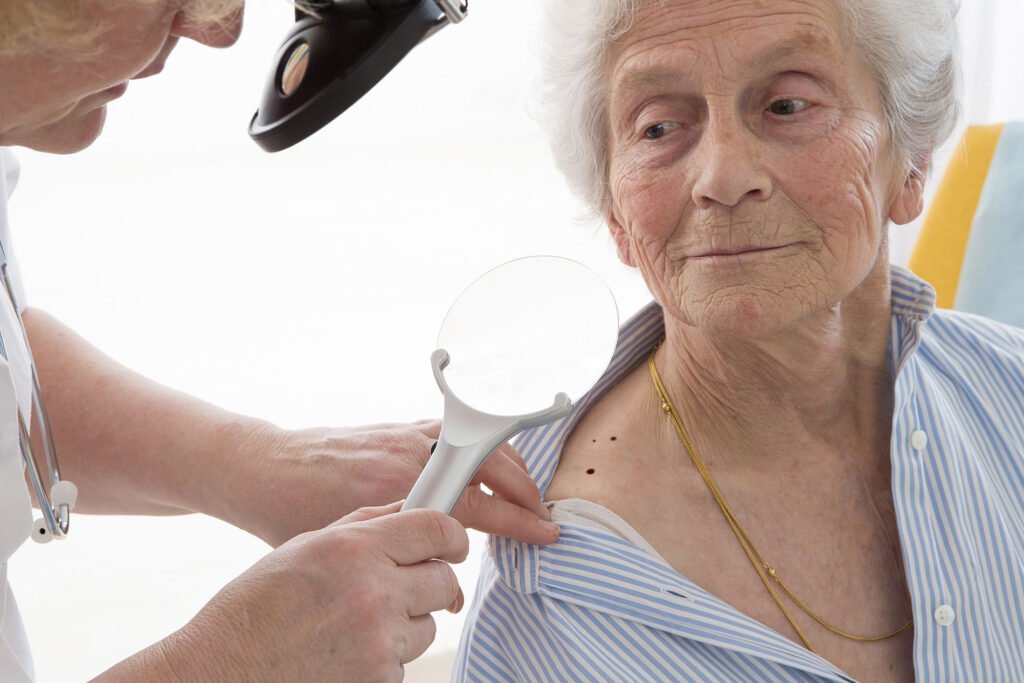
Squamous Cell Carcinoma
Cutaneous squamous cell carcinoma (SCC) is the second most common form of skin cancer. SCC occurs due to excessive sun damage and is more noted in areas of sun-exposed skin. Other risk factors for SCC include fair skin, multiple actinic keratosis (“pre- cancers”), history of organ transplant, or history of injury to the skin such as a burn.
Symptoms:
SCCs often appear as scaly or crusty bumps. SCCs are more likely to be painful than Basal Cell Carcinomas (BCC). Some SCCs can rapidly increase in size in a period of several weeks.
SCCs can metastasize (spread to other parts of the body). High risk locations include the scalp, ear, and lip. Large lesions (> 2.0 cm) are also more likely to metastasize. Patients who are elderly, on immunosuppressive therapy, or have a history of an organ transplant are at higher risk for metastasis.
Treatment:
Excision or electrodessication and curettage (ED&C/scrape and burn) are most often used for SCCs on the trunk and extremities. Mohs surgery may be recommended for lesions on the face or other critical locations such as the hands and genitals. Radiation therapy may be recommended when a patient is not a good surgical candidate.
Avid use of sun protection with sunscreen at least SPF 30, wide brimmed hat and sun protective clothing is integral to preventing multiple skin cancers.

